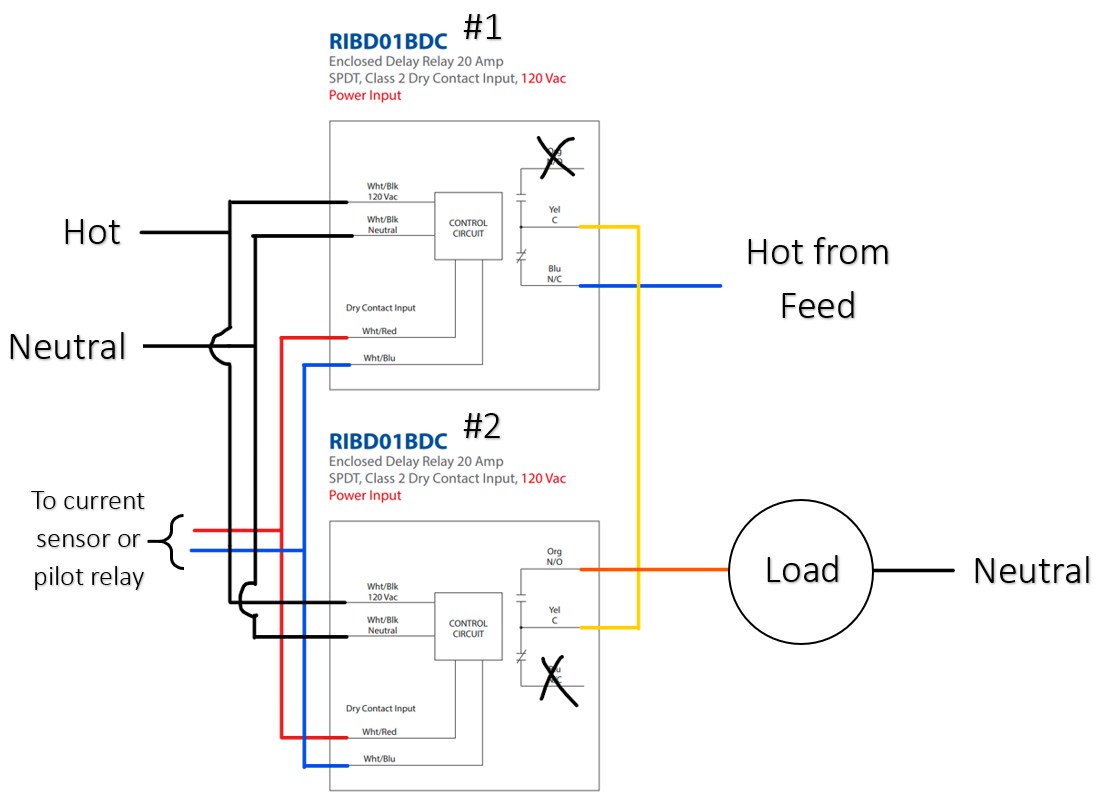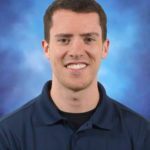Using a Time Delay Relay to Control Disinfecting UV Light

This week’s Tech Blog entry comes from a call I received from an electrician out in the field. Here’s the scoop: this electrician needs to turn on a UV disinfecting light in a bathroom after the occupant leaves. However, the UV light only needs to be on for 10-15 minutes. After that time expires, then the UV light needs to turn off. The dilemma is that the electrician has one RIBD01BDC delay relay. When using the device in the Delay on Break mode, the light turns on and stays on. He needs it to turn off as well.
Good news! This can be accomplished with an additional RIBD01BDC delay relay device. See the diagram below:

A quick explanation:
Both RIBD01BDC devices need 120V input power, Hot and Neutral on the “Wht/Blk” wires. RIB relay #1 will get 120V Hot input on the “Blu” wire and the “Org” wire will not be used. RIB relay #1 and RIB relay #2 “Yel” wires will both connect. Then, RIB relay #2 will provide a switched Hot leg to the Load via the “Org” wire and the “Blu” wire will not be used.
Set both RIB relays to the Delay on Break (DOB) mode. Set RIB relay #1 to the shortest amount of delay time. Then, set RIB relay #2 to the amount of time needed for the load to stay energized. Finally, the “Wht/Red” and “Wht/Blu” wires will go to any dry contact that changes state to begin the timing process (i.e. current sensor switch or pilot relay).
There you have it – a combination of RIB delay relays that can keep a load on for a desired amount of time and then turn the load off. It was a great challenge to help problem-solve for this electrician’s application. If you have any relay, current sensor, or power supply conundrums, feel free to reach out to us for Technical Support!
